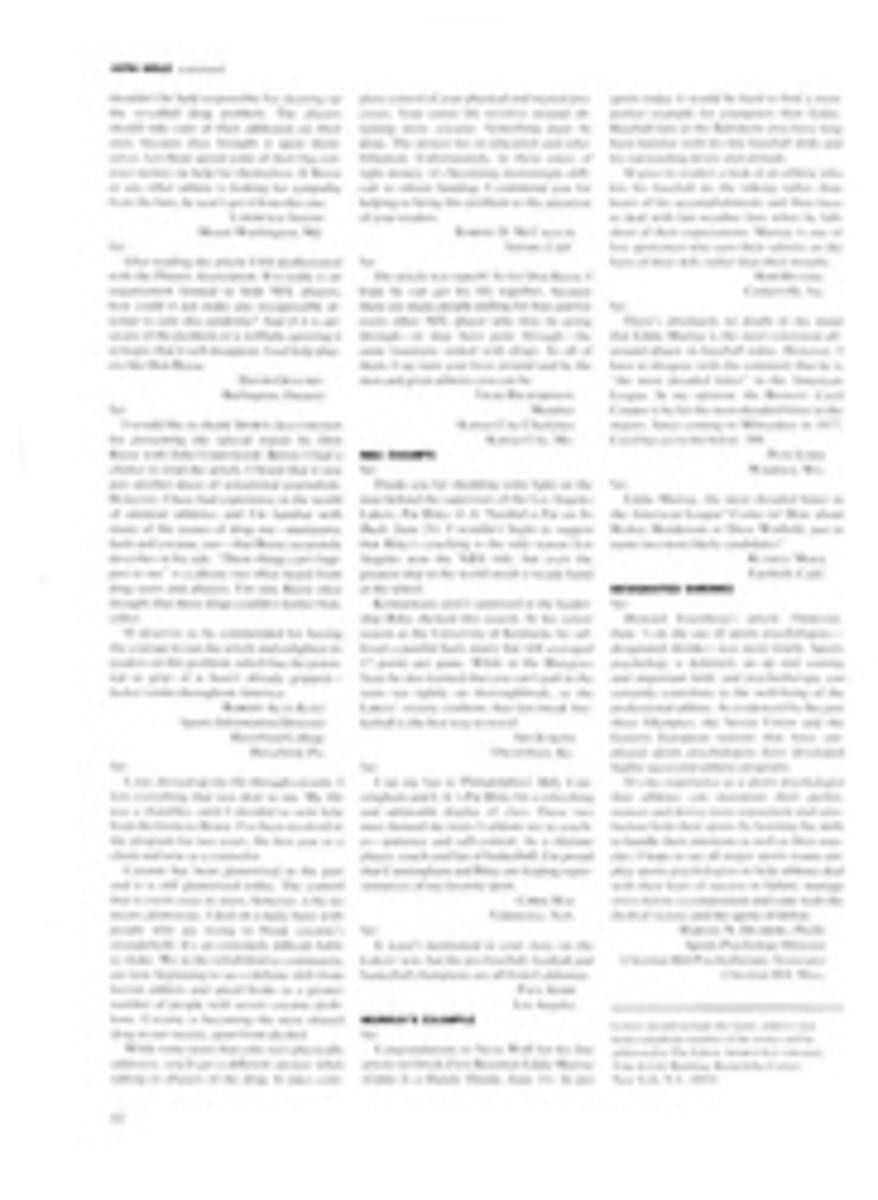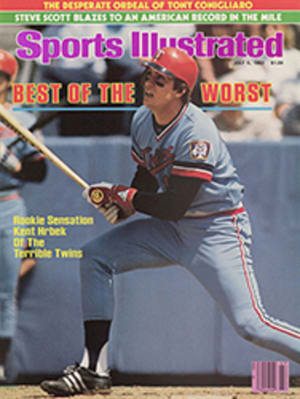
LETTER FROM THE PUBLISHER
Illustrator Dennis Luzak, 42, never saw the hospital scene he painted to open Staff Writer Jack McCallum's story on former Red Sox hero Tony Conigliaro (page 58). He didn't have to. He had been there himself. In 1945 Luzak spent 3½ months in a Chicago hospital room, in circumstances with frightening similarities to Tony C's in Salem, Mass. At the age of five, Luzak was hit by a streetcar as he trailed some schoolmates dashing across the tracks. His left leg crushed, with gangrene setting in, and his skull fractured, he lay in a coma for 21 days. His leg was amputated below the knee, but then blood poisoning developed. His family, virtually without hope, alerted the local funeral director to reserve a small coffin.
"The doctors had told my parents I wouldn't make it," Luzak recalls. "Then someone said, 'We could try a new drug. We don't know much about it, but it's been used on soldiers'—this was at the end of World War II—'with good results.' " The drug was penicillin.
Obviously, it worked. Luzak went on to study at the Art Institute in Chicago, at Notre Dame and at Detroit's School of Arts and Crafts. "It sounds like a place to learn to weave blankets and throw pots, but actually it's one of the best art schools in the country," says Luzak. In 1968, after five years as an automobile designer for Chrysler and Ford and two as an industrial designer, he switched to illustrating, working in a commercial art studio in Chicago. Six years later he moved to Connecticut with his wife and two sons to embark on a career as a free-lance illustrator.
The Tony Conigliaro assignment, which necessitated the prodigious achievement of nine paintings in seven days, is Luzak's 16th project for SI in the past seven years. Because only family and a very few guests are permitted to visit Tony C, Luzak worked from photographs and descriptions supplied by a variety of sources. Aspects of the opening scene could have been done without either. "It's a painting of the hospital room with cards and plants all over the place," says Luzak. "I remember that."
Neither Art Director Harvey Grut nor Baseball Editor Larry Keith knew anything of Luzak's medical history when Grut asked him to take on the assignment. "We went to Dennis because we wanted realistic scenes," says Keith. "We didn't want impressions or embellishments."
Everyone who has seen Luzak's previous work for SI—a 1975 feature on Babe Didrikson, for instance, or his "Rip Off" cover for John Underwood's 1980 article on the student-athlete scandal—can attest to the powerful messages his pictures convey. If any-thing, Luzak worried about being too forceful in his Conigliaro illustrations.
"I didn't want to be sensational," he says. "When I first read the story I thought how much it paralleled my own and I felt two things: I felt luckier than Tony and I felt immense compassion for the family. That's what I wanted to get across."
PHOTO
ARTIST LUZAK: A SPECIAL BOND WITH TONY C

